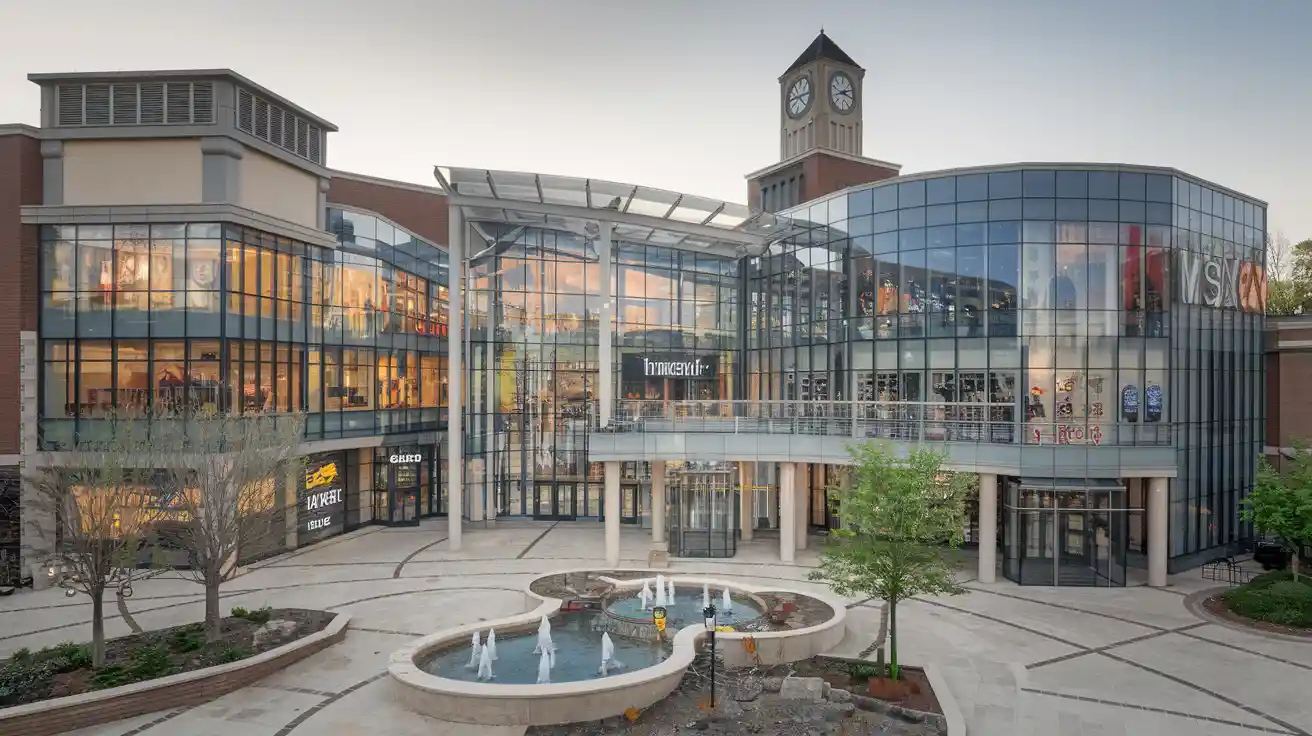
Willow Grove Park
Introduction
Nestled in Abington Township, Pennsylvania, Willow Grove Park holds a special place in the hearts of locals and visitors alike. Originally an amusement park that thrilled generations from 1896 to 1975, it has transformed the bustling Willow Grove Park Mall, a top shopping destination in the Philadelphia suburbs. This article explores the park’s storied past, its iconic attractions, and its modern-day significance as a retail hub, offering a blend of nostalgia and contemporary appeal.
A Historical Journey Through Willow Grove Park
Willow Grove Park opened in 1896, created by the Peoples Traction Company to boost weekend trolley ridership. This clever strategy birthed the term “trolley park,” as the park drew crowds via the Philadelphia Rapid Transit Company’s Route 6 streetcar. For nearly eight decades, it was a beloved destination, competing with Woodside Amusement Park in Fairmount Park. However, by 1958, streetcar service ceased due to the construction of the Pennsylvania Route 309 Expressway, signaling changes for the park. Despite its popularity, shifting entertainment trends led to its closure in 1975, paving the way for a new chapter.
The park’s land was cleared in the late 1970s, and by 1982, the Willow Grove Park Mall emerged on the same site. Designed with a Victorian theme to honor its predecessor, the mall preserved the park’s legacy through nostalgic elements like a carousel and historical displays. Consequently, the name Willow Grove Park continues to resonate, bridging the gap between a bygone era of amusement and a modern retail experience. This transformation highlights the area’s ability to adapt while maintaining its cultural significance.
The Golden Era of Willow Grove Amusement Park
During its peak, Willow Grove Park was a vibrant hub of entertainment. The music pavilion, a centerpiece of the park, hosted legendary performances by John Philip Sousa and his band from 1901 to 1926. These concerts drew massive crowds, showcasing the park’s cultural importance. Additionally, thrilling rides like the “Figure Eight” roller coaster captivated visitors, earning a mention in Bill Cosby’s book, Roland and the Rollercoaster. The park’s blend of music, rides, and scenic attractions, like a serene lake for boating, made it a cherished destination for families.
The amusement park’s influence extended into popular culture, appearing in films like She Married Her Boss (1934) and Malatesta’s Carnival of Blood (1973). It was also referenced in the TV show American Dreams (2002), highlighting its iconic roller coaster. Moreover, the park inspired James A. Michener’s novel The Fires of Spring (1949), based on his personal experiences. These cultural touchstones underscore Willow Grove Park’s lasting impact, cementing its place as a beloved landmark in Pennsylvania’s history.
The Birth of Willow Grove Park Mall
In 1978, Federated Department Stores and The Rubin Organization announced plans to transform the former amusement park site into a shopping mall. Despite initial community resistance, the project gained approval in 1979, and the Willow Grove Park Mall opened on August 11, 1982. With an initial cost of $25 million, the mall featured anchor stores like Bloomingdale’s, Abraham & Straus, and B. Altman and Company. Its Victorian design paid homage to the amusement park, incorporating nostalgic elements like a carousel installed in 2001, directly from the original park.
Over the decades, the mall evolved to meet changing retail demands. For instance, B. Altman closed in 1986, replaced by Sears in 1987, while Abraham & Straus became Strawbridge & Clothier in 1988. A significant $25 million renovation in 2001 added Macy’s and a parking garage. Furthermore, a mosaic wall installed in 2005 featured designs from the amusement park, reinforcing the historical connection. These updates ensured the mall remained a competitive and vibrant shopping destination in the Philadelphia suburbs.
Shopping and Dining at Willow Grove Park Mall
Today, Willow Grove Park Mall boasts over 120 stores, catering to diverse shopping needs. Anchor stores include Bloomingdale’s, Macy’s, Primark, Nordstrom Rack, and Tilted 10, offering everything from high-end fashion to affordable clothing. Popular retailers like Apple, H&M, and Victoria’s Secret attract a wide audience, while specialty shops like Build-A-Bear Workshop appeal to families. The mall’s three-story layout, complete with a scenic elevator and a nostalgic carousel, enhances the shopping experience, blending modern convenience with historical charm.
Dining options at the mall are equally impressive. The food court features 11 vendors for quick meals, while sit-down restaurants like The Cheesecake Factory and Yard House offer a more relaxed dining experience. Previously, TGI Fridays served patrons until its closure in January 2024. These dining choices, combined with the mall’s vibrant atmosphere, make it a popular destination for both locals and visitors seeking entertainment and retail therapy in the Philadelphia suburbs.
Willow Grove Park’s Significance in the Community
Willow Grove Park Mall is a cornerstone of Abington Township’s economy, employing over 2,000 people and generating $763 per square foot in sales in 2019, making it the third most profitable mall in the Delaware Valley. It serves as a major employer, contributing 7.86% of the township’s jobs. Additionally, the mall acts as a regional hub, accessible via SEPTA bus routes and near the Willow Grove station on the Warminster Line, drawing shoppers from Philadelphia, Montgomery County, and Bucks County.
Beyond economics, the mall fosters community engagement through events like charity drives and holiday celebrations. Its historical ties to the amusement park add cultural depth, with displays like the mosaic wall and carousel preserving the park’s legacy. Consequently, the mall not only drives economic growth but also strengthens community bonds, making Willow Grove Park a vital part of the region’s identity.
(FAQs)
When did Willow Grove Park open and close as an amusement park?
Willow Grove Park operated as an amusement park from 1896 to 1975, entertaining visitors for 80 years before closing due to changing entertainment trends.
What were the most popular attractions at Willow Grove Amusement Park?
The “Figure Eight” roller coaster and the music pavilion, which hosted John Philip Sousa, were among the park’s most iconic attractions, drawing large crowds.
What are the current anchor stores at Willow Grove Park Mall?
The mall features Bloomingdale’s, Macy’s, Primark, Nordstrom Rack, and Tilted 10 as its anchor stores, offering diverse shopping options.
Is there any remnant of the original amusement park at the mall?
Yes, the mall includes a carousel from the original park and a mosaic wall with designs inspired by the amusement park’s history.
How does the mall honor its history?
The mall pays tribute through its Victorian design, the carousel, and a mosaic wall, preserving the legacy of Willow Grove Park.
Conclusion
Willow Grove Park has seamlessly transitioned from a beloved amusement park to a thriving shopping mall, reflecting the region’s ability to adapt while honoring its past. From thrilling roller coasters to modern retail, it remains a cherished landmark in Pennsylvania. Whether you’re drawn to its historical significance or its vibrant shopping and dining options, Willow Grove Park Mall offers a unique experience. Plan your visit today to explore this iconic destination and discover its blend of nostalgia and modernity at Willow Grove Park Mall.





